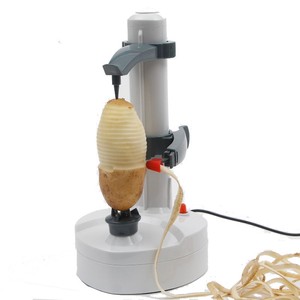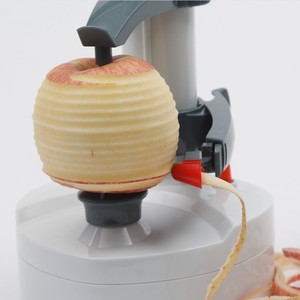(56 products available)





























































































































































A classic zester, also known as a zester or grater, is a kitchen tool used for zesting and grating. It is used to remove the outer rind of citrus fruits, creating fine zest for flavoring dishes. Classic zesters have small, sharp holes that produce delicate zest or shavings from citrus fruits like lemons, limes, and oranges. These zesters are essential for adding bright, concentrated flavors of fresh zest to recipes. They are often made from stainless steel, which makes them durable and easy to clean. Classic zesters are compact and handheld, making them convenient for various culinary tasks.
Some classic zesters have a built-in collection chamber to catch grated or zested ingredients, making them easy to use. Classic zesters are versatile kitchen tools that can be used for many things, such as grating cheese, chocolate, garlic, and ginger, as well as zesting citrus fruits. They help add zest to recipes, making them an important tool in any kitchen. Zesters are necessary for both professional chefs and home cooks. They help bring out the flavors and aromas in cooking and baking. The precise zesting and grating done by classic zesters can greatly improve the quality of many dishes.
Classic zesters have sharp edges that scrape off the zest from the citrus fruits. Different kinds of zesters are available, each with different features and uses.
Citrus zester
This tool is primarily used to remove the zest from citrus fruits. It has a small, sharp blade that cuts through the outer skin of citrus fruits like lemons, limes, oranges, and grapefruits. It is used to flavor dishes and make cocktails.
Box grater
It is a kitchen tool for grating various foods. It has four sides with different-sized holes for coarse or fine grating. It can be used to grate cheese, vegetables, and fruits, as well as zest citrus. It is a versatile tool used in many cooking tasks.
Microplane grater
This is a popular kitchen tool for grating various foods. It consists of a flat, sharp stainless steel blade with many small teeth along its edge. The teeth scrape off the food, creating fine shavings or powder. It can be used to grate cheese, chocolate, nuts, and garlic. It can also zest citrus fruits and spices like ginger and nutmeg. The microplane grater is known for its precision and ease of use. It allows for grating and zesting without much effort. The microplane grater can be used on different kinds of food, making it a versatile tool in the kitchen. It is also easy to clean, making it a convenient tool for everyday use.
Rasp-style zester:
Material: Most rasp-style zesters use stainless steel for the blade, while the handle uses plastic or wood. Stainless steel is durable and won't rust. The handle material varies. Plastic handles are easy to clean and come in many colors. Wooden handles are strong and feel nice in the hand but need more care. The combination makes a sturdy tool.
Hole zester:
Material: Hole or perforated zesters have a stainless steel blade and a plastic handle for the same reasons as the rasp style. The holes reduce clogs and make zesting smoother.
Shape: The holes in the blade flatten it, making zesting easier than with a thick blade.
Box zester:
Material: The box zester is made entirely of stainless steel, so it stays in one piece and works well for grating large amounts of food quickly.
Cylindrical zester:
Material: The blade is stainless steel, and the handle is usually plastic or rubber. This keeps it safe to use and comfortable to hold.
Shape: The round shape of the blade means it can grate food from all sides at once. This shape works well for zesting and grating in different directions.
Cooking zesting
In cooking, zesting is a common use of classic zesters. They are used to create zest from citrus fruits, such as lemons, limes, and oranges. This zest can then be added to various dishes, including desserts, sauces, salad dressings, and marinades, to provide a bright, fresh flavor.
Cocktail and beverage preparation
Beverage preparation is another use of classic zesters. When making cocktails or other drinks, zest can be obtained from citrus fruits and used as a garnish or flavoring agent. For example, lemon or lime zest can be added to cocktails like lemon drop martinis or mojitos.
Cheese zesting
Classic zesters can also be used to zest cheese, such as Parmesan or aged cheddar. Cheese zest can be added to pasta dishes, soups, and salads to provide a savory, umami flavor.
Chocolate zesting
In chocolate applications, classic zesters can be used to zest bars or shavings of chocolate. This zest can then be used to top desserts or beverages for a decadent touch.
Garnishes and decorations
Classic zesters can create intricate garnishes and decorations for dishes and beverages. Zest can be obtained from various fruits and vegetables and shaped into curls, ribbons, or flowers. These garnishes can elevate the presentation of dishes and add a pop of color and flavor.
Zesting non-food items
While classic zesters are primarily used for food applications, they can also be used to zest non-food items. For example, zest can be obtained from the skin of fruits and used in crafts or decorations. Zesters can also be used to zest herbs and spices, such as ginger or nutmeg, for use in dishes.
Business buyers need to understand these kitchen tools' quality, durability, and design. They should also consider these factors when choosing classic zesters.
Material of zester
Classic zesting tools use stainless steel and plastic. Stainless steel is durable and corrosion-resistant. It is suitable for frequent use in business kitchens. Plastic is also durable. It is lightweight and easy to clean. However, plastic material may not be suitable for high-temperature environments.
Durability
Business kitchens need tools that last long. Stainless steel zesters will be a good choice for durability. They can withstand frequent use and cleaning. Plastic handles may wear out faster if the zester is heavily used. Buyers in business kitchens should choose stainless steel options over plastic.
Ease of use
Some zesting tools have ergonomic handles and non-slip features. These designs make the tools comfortable and easy to hold. Business users will find these zesters easy to use. They can work quickly and efficiently. When choosing zesting tools, business buyers should consider the usability of zesting tools.
Brand reputation
Buyers should choose zesting tools from well-known brands. These brands have a good reputation in the market. They provide high-quality products and reliable after-sales service. Business buyers can trust these brands to ensure product quality and service support.
Cost
Classic zesters with high-quality materials and good performance will cost more. But, they can bring better cutting performance and durability. Business buyers need to balance the cost and quality. They should choose zesting tools that provide good value for money.
Function and versatility
Some zesters have multiple functions, such as grating and microplaning. These tools can meet different needs in the kitchen. Business buyers can save space and costs by choosing versatile zesters.
Size and storage
Classic zesters have different lengths and widths. Business kitchens have limited storage space. Therefore, buyers should consider the size of the zester. They should ensure that the zester will fit in the kitchen storage. Some zesters have detachable designs. Their handles and blades can be stored more conveniently.
Q1: What is the difference between zesting and grating?
A1: Zesting removes the outermost layer of citrus fruits, while grating produces smaller particles of food.
Q2: How can one zest citrus fruits without a zester?
A2: One can use a microplane, peeler, or knife to zest citrus fruits when a zester is unavailable.
Q3: Can one zest fruits other than citrus?
A3: Zesters can zest various fruits, including ginger, apples, and cheese.
Q4: How does one clean a zester?
A4: To clean a zester, wash it with warm soapy water and rinse thoroughly under running water.
Q5: What are the safety tips for using a zester?
A5: Always zest away from oneself and use the protective cover provided with the zester when not in use to prevent accidental cuts.
The web search volume for the keyword "classic zester" in the furniture category shows a steady average monthly web search volume of 10, with no significant changes observed over the past year. The keyword maintained a consistent web search volume of 10 in several months, while experiencing zero web searches in others, notably March, May, and June 2024.
Analyzing the search trend for "classic zester," it is evident that the keyword experiences periodic dips in interest, indicated by the months where web search volume dropped to zero. Despite these fluctuations, the overall interest in the keyword tends to rebound quickly, as seen in the subsequent months where web searches resume at the average rate. This pattern suggests a cyclical nature in user interest or availability of the product in the market.
This stability in web search volume, interspersed with occasional drops to zero, could be influenced by various factors such as seasonal demand variations, market availability, or shifts in consumer interest towards related products. However, the quick recovery in web search volumes post-dip suggests a sustained underlying interest in the "classic zester" within the furniture category, despite external market changes.